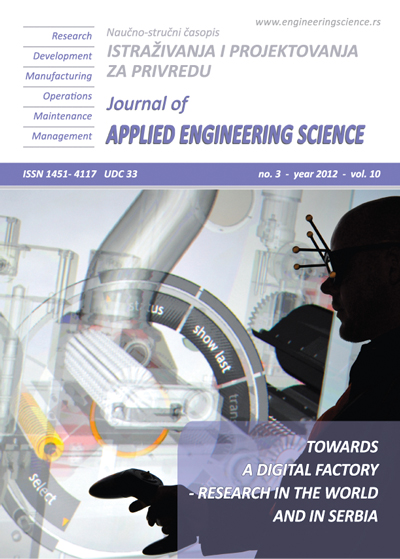A COMBINING GENETIC LEARNING ALGORITHM AND RISK MATRIX MODEL USING IN OPTIMAL PRODUCTION PROGRAM
Abstract
One of the important issues for any enterprises is the compromise optimal solution between inverse of multi objective functions. The prediction of the production cost and/or profit per unit of a product and deal with two obverse functions at same time can be extremely difficult, especially if there is a lot of conflict information about production parameters.
But the most important is how much risk of this compromise solution. For this reason, the research intrduce and developed a strong and cabable model of genatic algorithim combinding with risk mamagement mtrix to increase the quality of decisions as it is based on quantitive indicators, not on qualititive evaluation.
Research results show that integration of genetic algorithim and risk mamagement matrix model has strong significant in the decision making where it power and time to make the right decesion and improve the quality of the decision making as well.
References
C. McNair: Defining and Shaping the Future of Cost Management, Journal of Cost Management, Vol. 14, No. 5, 2000, pp. 28-32, ISSN 1092-8057.
Curović, D., Vasić, B., Popović, V., Curović, N.: Ekspertsko planiranje proizvodnje, (2008) Journal of Applied Engineering Science (Istraživanja i projektovanja u privredi), no. 20, p.49-57
Eckart, Z., Evolutionary Algorithms for Multi-objective Optimization: Methods and Applications. PhD thesis, Swiss Federal Institute of Technology (ETH), Zurich, Switzerland, November 1999.
Glover F., Kelly J.P., Laguna M., New Advances for Wedding Optimization and Simulation, Proceedings of the 1999 Winter Simulation Conference, 1999.
J. Fraser, B.J. Simskins: Enterprise risk management: Today’s Leading Research and Best Practices for Tomorrow’s Executives, John WIley & Sons, ISBN 978-0-470-49908-5, USA, 2010.
J. Sanchis, et al.:A new perspective on multi-objective optimization by enhanced normalized normal constraint method, Structural and Multidisciplinary Optimization, 2008, Vol. 36, No. 5, pp. 537–546, ISSN 1615-1488.
L. Chi-Ming, G.Mitsuo: An Effective Decision-Based Genetic Algorithm Approach to Multi-objective Portfolio Optimization Problem, Applied Mathematical Sciences, 2007, Vol. 1, No. 5, pp. 201 – 210, ISSN 0066-5452.
Miettinen, K., Nonlinear multi-objective optimization. Springer, 1999.
N. Fafandjel, A. Zamarin, M. Hadjina: Shipyard production cost structure optimization model related to product type, International Journal of Production Reasearch, 2010, Vol. 48, No. 5, pp. 1479-1491, ISSN 0020-7543.
S. Utyuzhnikov, P. Fantini, M. Guenov: A method for generating a well- distributed Pareto set in nonlinear multi-objective optimization, Journal of Computational and Applied Mathematics, 2009, Vol. 223, No. 2, pp. 820–841, ISSN 0377-0427.
The CAS Enterprise Risk Management Committee: Overview of Enterprise Risk, Management,Casualty Actuarial Society Forum, 2003, Pages 99-164, ISSN 1046-6487

